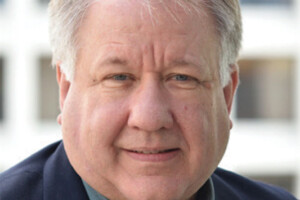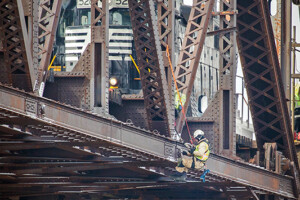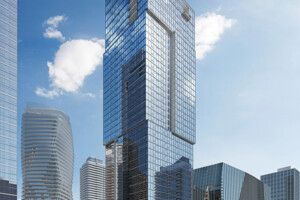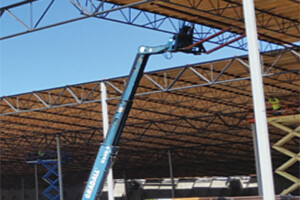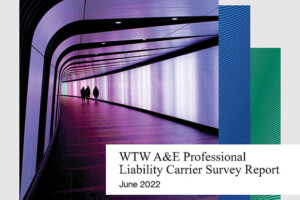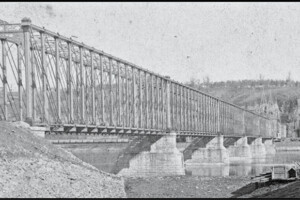It has been less than four years since the 2019 publication of the foundational provisions developed to advance performance-based wind design into practice, and the Structural Engineering Institute (SEI) of the American Society of Civil Engineers (ASCE) is leading the way on two additional steps forward.
…Review Category : Articles
What is Ultrasonic Testing?
When doctors need to diagnose an internal medical issue, they use an X-ray machine or ultrasonic testing to non-invasively look inside the human body. When it comes to checking the potentially ailing components of a bridge, the engineers can use ultrasonic testing (UT), a non-destructive testing (NDT) method, to look inside the bridge. This allows them to view and understand a bridge’s welds and components for structural integrity before deterioration or internal flaws become a potential hazard.
…According to the World Meteorological Association, 2011-2020 was the warmest decade on record. The current decade is expected to be even warmer. Climate change is real; excess atmospheric carbon is a primary cause, and reducing it is the responsibility of all. That includes structural engineers, who can play a key role in reducing the carbon footprint of buildings and other structures.
…As the name implies, a hybrid roof system combines plywood sheathing and wood sub-purlins supported by open web steel joists and joist girders. Hybrid roof systems offer a more sustainable alternative to metal deck systems. In addition, depending on the market, hybrid roofs can be more cost-effective and faster to build than metal deck roofs. This article investigates hybrid roofs under light to heavy uniform and non-uniform snow loads throughout the Mainland U.S. Sheathing thickness, rafter size, and rafter spacing are adjusted accordingly to provide adequate strength and stiffness. The findings are presented in color-coded maps, enabling owners, architects, and engineers to make instant and accurate decisions.
…In January 2022, WTW A&E released a survey of senior claim managers from twelve leading professional liability insurance carriers for architects and engineers in North America. The survey focused on emerging risks and claim trends in the design profession. This article is the first of a three-part series that will address the survey’s key findings and offer some insights and recommendations on what design firms can do to mitigate their risk of costly claims and client disputes. In this issue we will discuss social inflation and cyber liability. Future issues will discuss the impacts of climate change, Covid-19, contracts, the enhanced risks associated with certain project types and staffing concerns.
…The already deteriorating Pier 54 was further damaged by Superstorm Sandy in 2012. Hudson River Park Trust, the public agency that oversees the parks along the Hudson River in lower Manhattan and converts existing piers into public parks, decided to replace the pier with a new kind of public park on the river. A philanthropic foundation generously funded the project, and Heatherwick Studio in London was commissioned to guide the vision of creating informal, playful, and educational public space into a reality. The idea was to create an undulating landscaped park with a plaza, performing spaces, and overlooks surrounded by the lawn and trees.
…The built environment is a powerful tool for improving people’s lives, sense of well-being, and overall health. As such, good design is an important tool in the fight for equity across populations. Unfortunately, design services are often a luxury, inaccessible to those who might benefit most from them. However, architects and engineers are not able to operate without resources. To explore these topics, ARCHIVE Global and Silman’s Building Equity Initiative teamed up to host a conversation amongst New York City practitioners to evaluate barriers and best practices when addressing pro-bono and low-bono design work. Below is a documentation of the shared challenges, strategies, and opportunities voiced by architects and engineers in attendance, focusing particularly on the structural engineering perspective.
…This article provides an update on the progress and focus of the American Society of Civil Engineers/Structural Engineering Institute’s (ASCE/SEI) Fire Protection Committee for the next two years. The aim is to support the field of structural fire engineering through collaboration and sharing of knowledge across industry and academia.
…The Dubuque and Pacific Railroad began construction on a 29-mile line extending from Dubuque to Dyersville, Iowa in 1857 followed by another 49-mile section to Jessup by 1860. It was purchased by the Dubuque and Sioux City Railroad which extended the line to Cedar Falls, Iowa. The Illinois Central was formed on February 10, 1851 as one of the first land grant railroads and was to run northerly from Cairo at the southwestern tip of Illinois northerly to Chicago and then westerly to Freeport and on to Dunleith, Illinois for a distance of 453 miles. It arrived in Dunleith in 1866. It leased the Dubuque and Sioux City Railroad line in 1867 to extend its line into Iowa.
…In the past few months, I have watched a few webinars on structural engineering topics and have come away wondering why I wasted my time. It wasn’t so much the technical content per se or the knowledge or earnestness of the presenters but the poor quality of the presentations themselves disturbed me so much that I couldn’t focus on the content. The words just became “blah, blah, blah,” I tuned out and became a movie critic with running commentary. Many of you might already be thinking that if I am such a presentation hotshot, why I don’t do them myself and show us how it is done. Hence this article.
…
